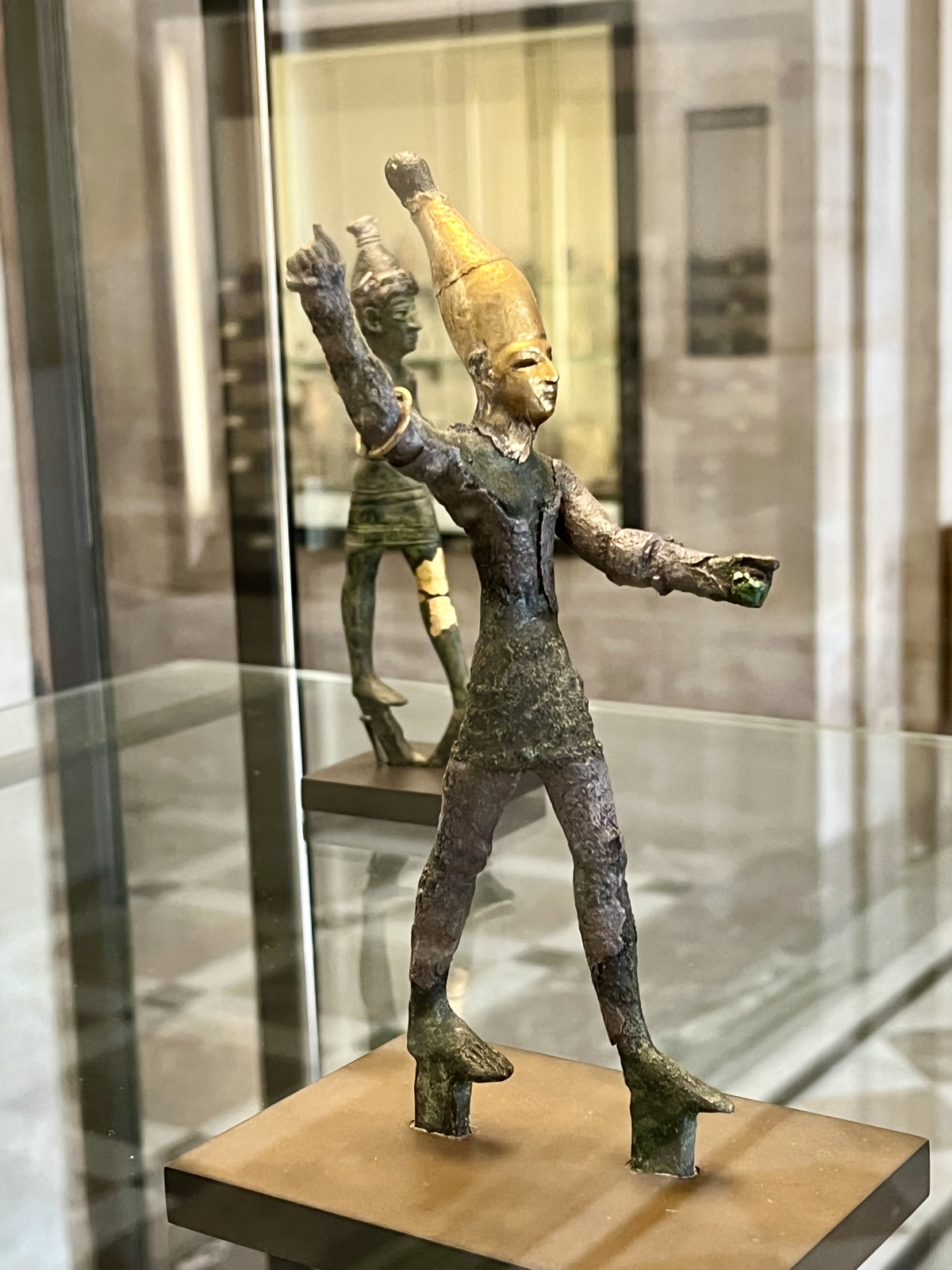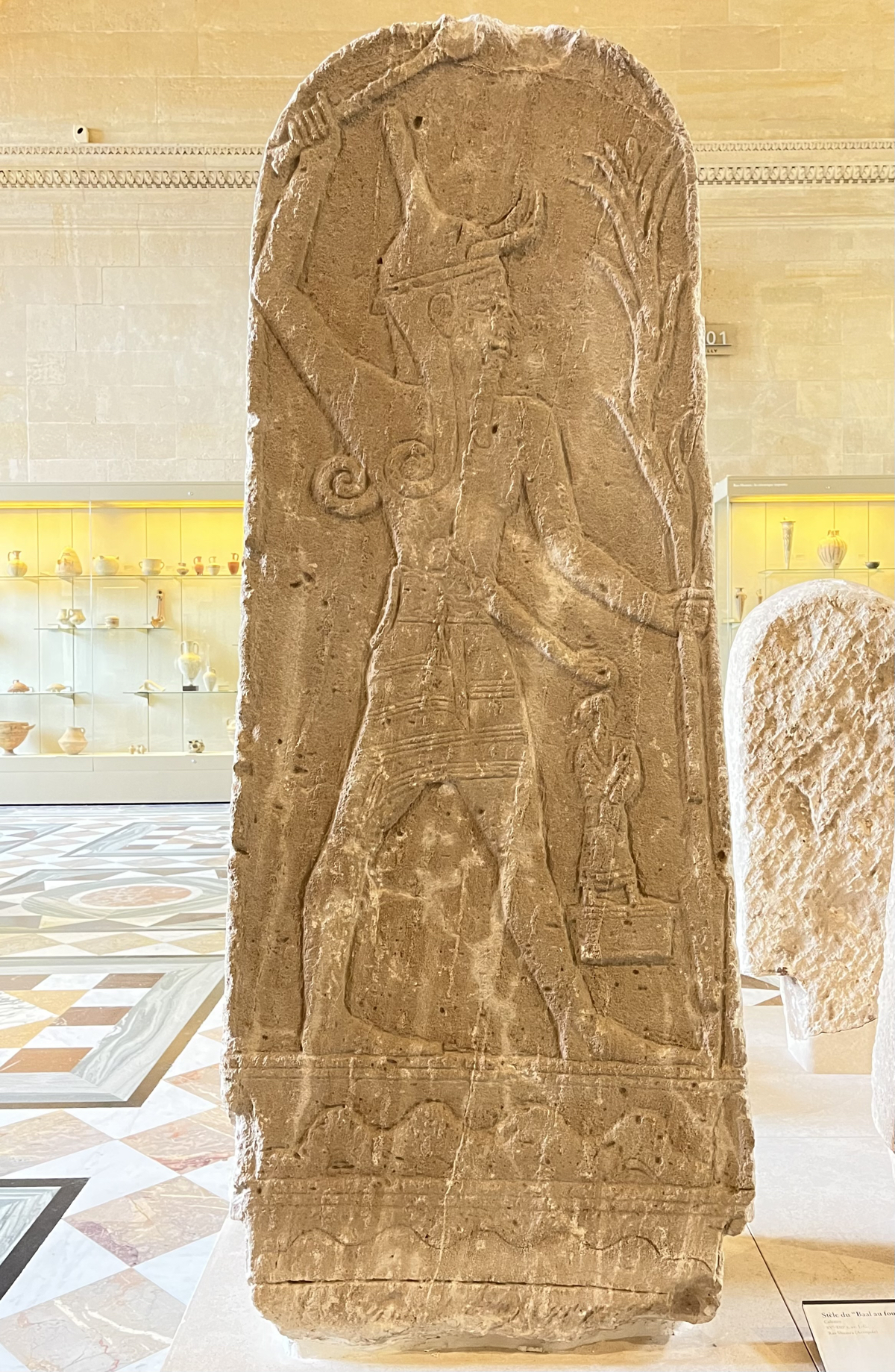By Luke Chandler
Synopsis: Some artifacts in the Louvre illuminate Baal and deepen our understanding of Elijah’s drought and the Mt. Carmel contest.
Baal is famous in the Old Testament. The idol was popular throughout ancient Syria, Phoenicia, and Canaan. The Bible records that some in Israel and Judah were worshiping Baal in the time of the Judges (Judg. 6; 1 Sam 12:10). Later, Baal was still being worshiped in both Israel (1 Kings 16:31) and Judah (2 Chron 23:17). Under King Ahab and his sons, Israel had a dedicated temple for Baal in the capital city of Samaria (1 Kings 16:32).
Some people incorporated Baal into their names. The nickname “Jerubbaal,” given to Gideon in Judges 6:32, was recently attested through archaeology at the Khirbet er-Ra’i site in Israel. (I worked on that project in 2019.) Other people named for Baal include the Phoenician princess Jezebel (“bel” was a form of “baal”) and her father Ethbaal (1 Kings 16:31). The name Baal literally means “Owner” or “Lord” and occasionally could denote YHWH, but almost always refers to the idol in the biblical text. What did King Saul intend when he named his youngest son Eshbaal [“man of baal”] (1 Chron. 8:33; 9:39)? The Bible usually calls him Ishbosheth, possibly to avoid referring to the baal name. Is there a related reason Jonathan named his own son Merib-baal [“one who resists baal”] (1 Chron. 8:34)? The Bible otherwise calls him Mephibosheth in the books of Samuel.
What did Baal look like? We typically find him depicted as a man in a standing position with feet in mid-stride. He wears a tall hat that symbolizes his authority. Baal’s right arm is raised above the head and his left hand is extended forward, as if receiving an offering. In some depictions, his raised right hand carries a weapon for smiting an enemy. Smaller Baal figurines have pegs on the bottom of the feet that would fit into a block of wood, enabling the idol to stand upright in its shrine.
For all the fame of Baal’s name, can we identify his powers? What did Baal’s followers expect him to do? From archaeology, we know Baal was a weather deity. He was the god of the storm and his voice was the thunder. He sent the rain in its season. Ancient pagans looked for Baal to give life to their crops and protect from famine.
One depiction in the Louvre museum illuminates the Bible’s most famous story of Baal. A stone relief from the ancient Syrian kingdom of Ugarit portrays the god standing over a smaller figure who likely represents the local king. Baal’s raised right arm wields a mace but his extended left hand holds a plant-looking thunderbolt shaped at the bottom like a spear. What is the message? Baal is shown as a powerful protector of the king, who brings fertility to plants and casts lightning to the earth.
When Ahab and Jezebel instituted Baal worship as Israel’s official religion, Elijah countered by proclaiming a drought in the name of God and later challenging Baal to send lightning down on his own altar (1 Kings 18). What better way to reveal Baal’s impotence? Elijah specifically targeted Baal’s powers and showed that only YHWH controlled the rain and storm.
Archaeology provides another biblical insight about Baal. In the same room that contains the stone relief mentioned above, there are a series of ancient tablets from Ugarit that detail the “Baal Cycle.” In this mythology, Baal is killed and later comes back to life. Most scholars interpret this as an explanation for the dry summers in the Eastern Mediterranean. Why do the rains go away from late spring to early fall each year? Ancient Canaanites believed Baal was dead during those months, then came back to life (in our month of October) to send the early rains. Perhaps this is why Elijah proclaimed, “As YHWH, the God of Israel, lives. . . there shall be neither dew nor rain these years” (1 Kings 17:1) Elijah’s words directly contrasted the constantly dying Baal with the omnipresent God of Israel.
Archaeology provides us with a powerful tool. It brings us closer to the original perspectives of biblical people. We come to understand words and events as they did, which is vital to us as “Biblical Restorationists.”


Image-1 Caption: The first photo, showing Baal with a gold hat, shows the typical pose. His right arm is raised to smite, and his left is extended to either hold something or to receive an offering.

Image-2 Caption: The second photo shows a stone relief of Baal holding a mace in his raised right hand and lightning in his left. He was considered a god who controlled weather, which illuminates why Elijah revealed Baal’s impotence with both a drought and a challenge to light his own altar from the sky.
Both photos were taken by Luke Chandler in the Louvre Museum in Paris, France.

